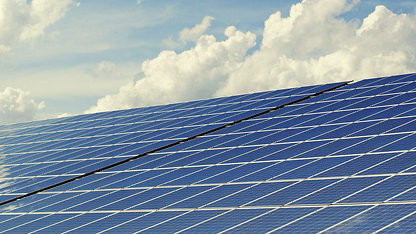After centuries building dykes, the Dutch adopted a pragmatic approach to rising sea and river levels: living in harmony with water rather than trying to control it.
“Bring in the Dutch!” It’s long been the rallying cry in flood-stricken locations. And for good reason: more than half of the Netherlands – and where 65% of its GDP is earned – is below sea level.
But in spite of centuries of “the war on water”, floods can and do happen. In 1953, the Netherlands suffered a catastrophic flood in which more than 1,800 people died. The government’s response was a huge national project called the Delta Works: a series of dams and surge barriers designed to shorten and thereby strengthen the coastline.
Forty years later, in 1993 and 1995, the “enemy” came from the other direction: the rivers that flow east through the Netherlands into the North Sea. At the last minute the dykes held, but 250,000 people had to be evacuated and much of the country was in disarray. Again, the response to the floods was a huge government project, but this time it was something rather different: the mentality of the “war on water” had made way for a realisation that working with natural processes makes cities and the countryside more resilient.
“Rather than the traditional response of raising the dykes, the idea is to create space for controlled flooding.”
The Room for the River project, which started in 2007 with a budget of €2.3bn, designated 40 projects along the rivers Rhine, Waal, Maas and IJssel. Rather than the traditional response of raising the dykes, the idea is to create space for controlled flooding. That can take the form of adding a new purpose-built bypass to accommodate extra water, or lowering the dykes so that the water can be diverted into spillways when it gets above a certain level.
Altogether about 100 people had to be convinced to sell their house, their business and their farm to the government and move elsewhere. It also says a lot about the – perhaps overly – protective attitude of the Dutch state that residents had no choice but to leave areas designed to accommodate controlled flooding. It would have been seen as irresponsible to let people decide whether to stay or go and run the risk of the authorities having to rescue them.
Room for the River is a product of a growing environmental awareness, fed by a realisation that centuries of intervening in the natural hydrological systems have come back to haunt the Netherlands. For example, the Delta Works have exacted their own ecological toll: shellfish and seals behind the Oosterschelde storm surge barrier have suffered and, cut off from tidal action, the body of water called the Grevelingen has gone stagnant. But make no mistake: it is still people who draw the line in the sand and decide just how much nature gets her way.
Four smart flood-prevention projects
High life
The Overdiepse polder was one of the few Room for the River projects where the inhabitants took matters into their own hands, when dairy farmers who had worked there for generations discovered that their land had been designated as a spillway. “We realised that we could either try to fight it, or try to use the plan as a means to modernise our businesses”, spokesman Nol Hooijmaijers says. Together with landscape architect Bosch Slabbers and the province, the farmers put together a €111m plan to lower the dyke along the river and rebuild the farms on mounds along the other edge of the polder (low-lying land). Hooijmaijers admits that deciding who stays and who goes was painful. “There were 18 farms, but there are seven mounds.” L’histoire se répète: mounds, an age-old solution to living in flood-prone areas, have reappeared, with EU subsidy, as a 21st-century solution.
Successful float
The fishing village of Spakenburg now boasts the world’s longest self-closing flood barrier, sunk into a trench in the quayside along the harbour, designed by local inventor Johann van den Noort. When water levels in the Eemmeer lake rise, the resulting surge pushes the 300m barrier’s kevlar panels up to hold the water back. When the water subsides, the floating panels descend with it, and all you see is a metal strip engraved with the town’s motto.
Lite relief
Meanwhile, the medieval town of Kampen, along the River IJssel, is defended by the 200 volunteers in the High Water Brigade. When high water is imminent, they assemble temporary barriers made from metal planks slotted one on top of the other to block up the gaps in the town’s historic city wall – a form of flood management “lite”.
Bridge not too far
The biggest, most ambitious and, at €126m, most expensive Room for the River project is at Nijmegen, on the River Waal. The city jumped at the opportunity to pair water safety measures with a major urban overhaul and the construction of a new residential area. It created a new dyke, which is 3km long and can be as much as 5m deep when the river runs high. The river’s edge was redesigned as an attractive public park, with steps leading from the dyke to the water’s edge. It is now a place to enjoy rather than ignore. The city built five new bridges, including one over the bypass and a bike bridge by Next Architects, which is impassable at high water. “That is intentional”, says landscape architect Mathieu Schouten. “The bridge functions not only to cross the water, but also to make people aware that our surroundings are changeable: there are times when you cannot cross the water.”

















